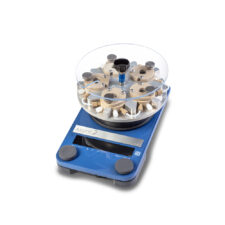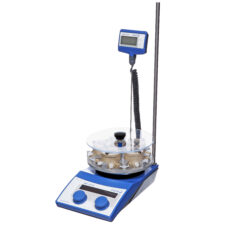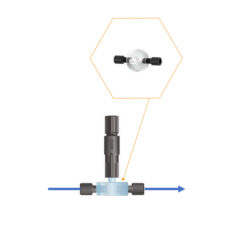We are pleased to share news of a NEW fReactor Flow Chemistry paper published recently. fReactor brings a range of intuitive and flexible flow reactors capable of operating with single and multiphasic reaction systems to support the development of materials and synthesis routes.

A brief summary of the paper
Dr Arran has summarised the paper, published by scientists including Dr Duncan Browne, (UCL School of Pharmacy, UK) where a telescoped Z-selective cross-metathesis/Dieckmann cyclisation sequence to access (Z)-Civetone, incorporating a serial array of continually stirred tank reactors (fReactor) is reported.

Synthesis of Civetone 20 starting from 6via Dieckmann condensation and decarboxylation in the fReactor
Overview of the paper
Reactions of this type are usually controlled in batch by dropwise addition of one of the components to keep the concentration of intermediate low, favouring cyclisation. Therefore design of a reactor to achieve this in flow requires multiple injection points along the length of the reactor, where, at each point a portion of one component is introduced via a mixer to the flowing stream.
Depending on the rate of reaction, there may need to be a maturing period for the reaction prior to the next ‘injection’ or ‘drop’ of material. This can be achieved using a continuous stirred-tank reactor design (CSTR), which can also accommodate active stirring (the Asynt fReactor). The use of multiple injection points and CSTRs is also a good reactor design if there is them risk of fouling, bridging or precipitation in the reactor. Bearing in mind the propensity to form a precipitate and block the reactor, the authors opted for a reactor design consisting of a serial array of CSTRs.
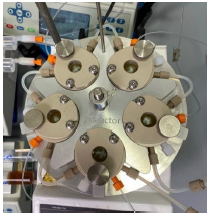
Incorporating this into a semi-continuous process targeting Civetone, LiHMDS was introduced into the serial CSTR reactor fReactor through input port 1 where it met the first portion of diester in tank 1 of the reactor and progressed through the reactor cascade to meet a total of 5 portions of diester before exiting to a batch collection flask. The continuous flow total synthesis of (Z)-Civetone was successfully achieved in >98% Z-selectivity and 48% yield over 3 steps from a biosourced raw material by utilising the fReactor.
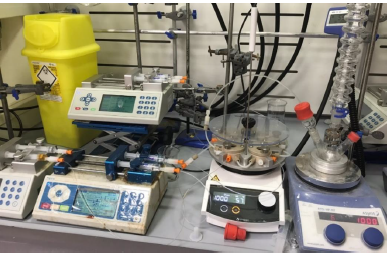
Civetone is an industrially significant compound. It is a particularly strong-smelling component of civet oil, a pheromone emitted from the African civet and highly desirable for the perfume industry, present in many fragrances albeit in extremely low concentrations.
Cite: Morvan, Jennifer; McBride, Tom; Curbet, Idriss; Colombel-Rouen, Sophie; Roisnel, Thierry; Crévisy, Christophe; et al. (2021): Continuous Flow Z-stereoselective Olefin Metathesis: Development and Applications in the Synthesis of Pheromones and Macrocyclic Odorant Molecules. ChemRxiv. Preprint. https://doi.org/10.26434/chemrxiv.14579133.v1
To read the published fReactor Flow Chemistry paper in full please follow this external link:
Would you like to know more about fReactor?
In addition to our own product information, the inventors of this innovative and accessible Flow Chemistry platform, Prof. John Blacker and Prof. Nikil Kapur (IPRD, University of Leeds) have a dedicated website with further published papers, examples of chemistry carried out, and details of the platform operation. You can find this online here: https://www.freactor.com/
In the meantime our short video, below, introduces John and Nikil and the principals behind fReactor:
Please feel free to contact us at any time if you’d like to discuss how fReactor could be useful for your chemistry!
